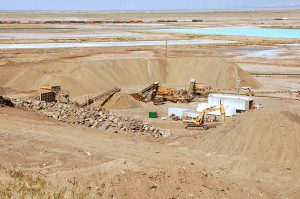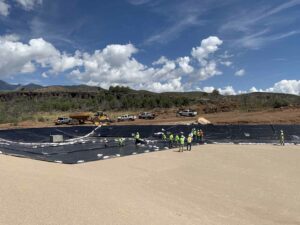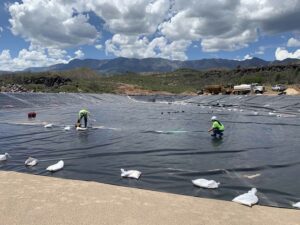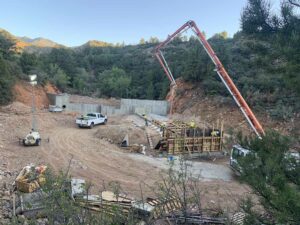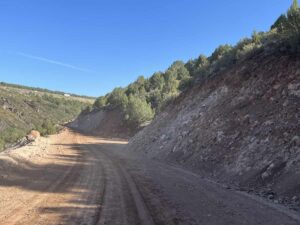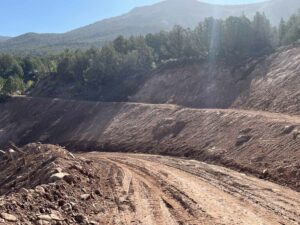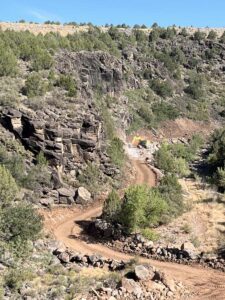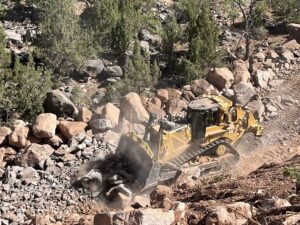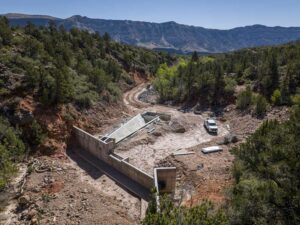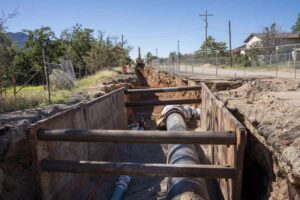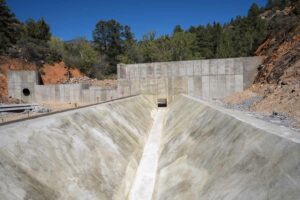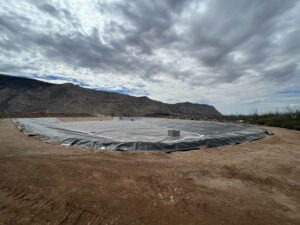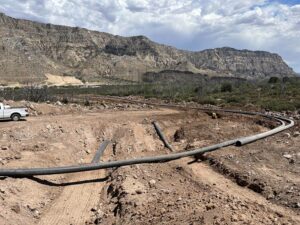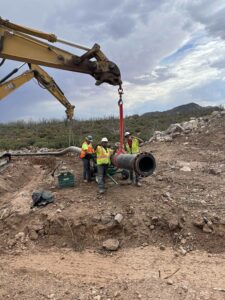Ash Creek Tributaries
- Owner: Washington County
- Location: Washington County
- Completion Date: 1 Oct 2023
- Core Competencies: Earthwork, Pipelines & Drainage
Related Projects
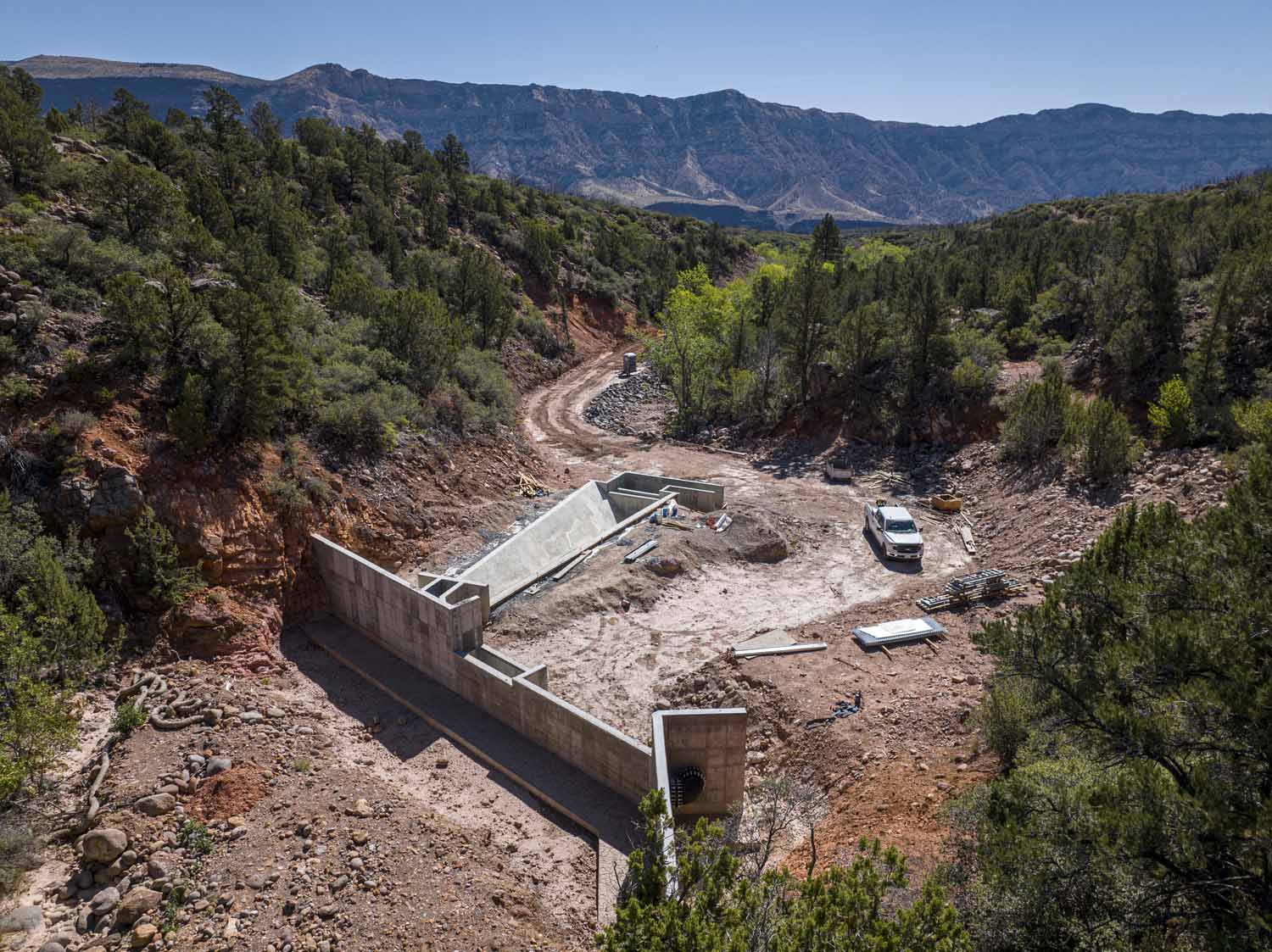
The Ash Creek Tributaries project encompasses a multifaceted scope of work, aiming to enhance the region’s water infrastructure. It involved the installation of a network of pipelines, spanning approximately 30,000 feet. These pipelines, predominantly composed of high-density polyethylene (HDPE), ranging in diameter from 8 to 36 inches, with some PVC ensure the efficient conveyance of water resources.
In addition to the pipeline installation, key project elements include the construction of a diversion dam and desilting basin. These features will help manage sediment and optimize water quality, benefiting both the ecosystem and the water supply. The project also included the creation of a lined earthen regulating reservoir. These components amongst others led to a successful project that has since improved the infrastructure to the community in the area.
Overall Safety of the Project:
Ash Creek Tributaries had an impeccable safety record, characterized by zero recordable incidents, with 31,710 man hours. This project has been recognized as the “Safe Project of the Year,” which underscores the dedication the team upheld to maintain the highest safety standards throughout every phase of the project. Different monthly, weekly, and daily safety trainings helped to mitigate risk, enhance awareness of potential dangers, and motivate the team adapt to different phases of construction.
Overcoming Challenges & Teamwork:
Situated in a rugged canyon with rough terrain and limited access, the project encountered several obstacles. One of the primary challenges was the need for extensive rock excavation to lay the pipeline effectively. To overcome these challenges, the project team displayed remarkable teamwork and resilience. They tackled the rough terrain with innovative solutions, using specialized equipment and expertise to navigate the challenging landscape. Team members collaborated closely, drawing upon their collective knowledge and experience to devise strategies for rock excavation and pipeline installation.
Effective communication and coordination were vital components of the project’s success. Team members shared insights and feedback, allowing them to adapt swiftly to the unique demands of the site. They used state-of-the-art rock excavation techniques and safety protocols to ensure the work was executed efficiently and securely. This project’s triumph serves as a testament to the power of teamwork and resourcefulness. Despite the unforgiving terrain and intricate rock excavation requirements, WW Clyde’s dedicated team pulled together to deliver a successful and enduring solution for the benefit of the surrounding community.
Innovation & Contribution to the Industry/Community:
In this project, WW Clyde utilized fast fusion machines, a cutting-edge tool that expedited pipeline installation. This innovation not only sustained the construction timeline but also delivered cost savings and enhanced safety. Additionally, this method’s eco-friendliness reduced the environmental footprint compared to conventional pipeline installation techniques.
WW Clyde’s dedication to community engagement was another integral aspect of the project’s success. The team maintained open and continuous communication with the town of Pintura, ensuring that local residents were informed about the construction activities. This proactive approach fostered a harmonious relationship with the community and demonstrated a commitment to minimizing disruptions and ensuring public safety throughout the project’s duration.
Function & Aesthetic Quality of the Design:
This design encompasses the conveyance and regulation of water flows from a collection area with a concrete structure. It guides these flows to a regulating reservoir and then through the town of Pintura. Ultimately, it establishes a connection with an upcoming pipeline that will stretch from the Ash Creek Reservoir to the new Toquerville Dam Site, all in service of fulfilling the region’s water supply needs.

